

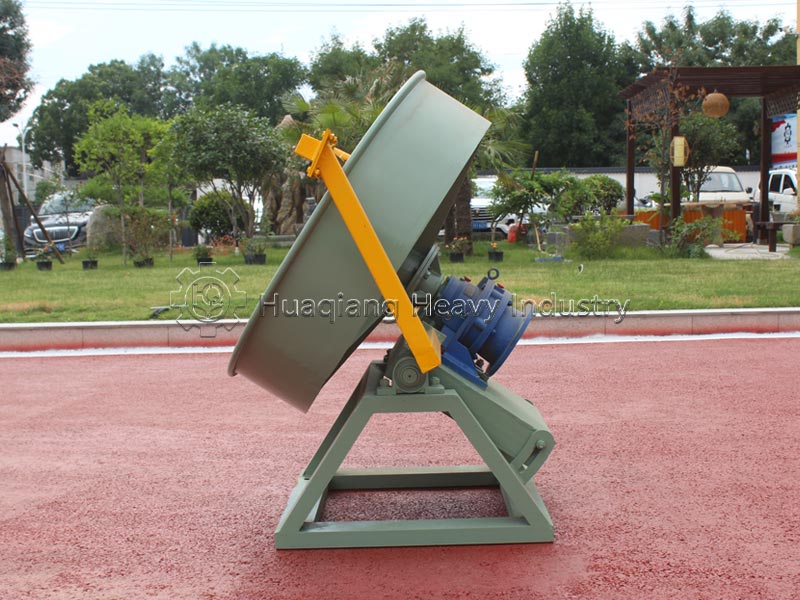
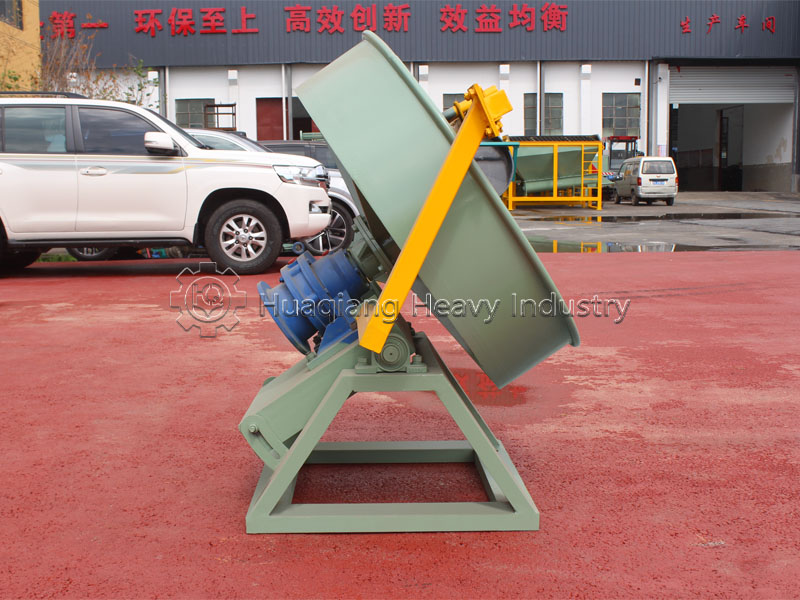
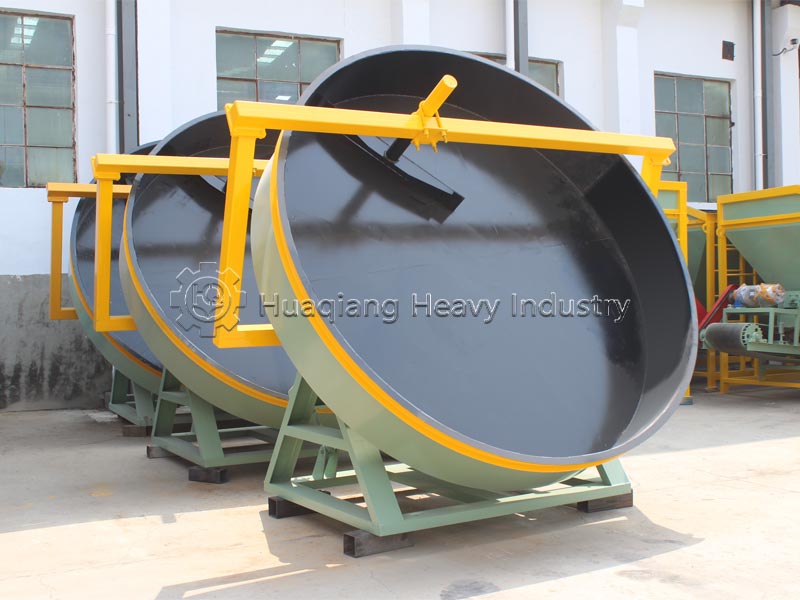
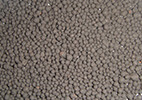

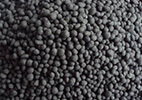
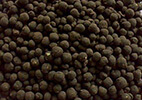
The disc granulator is a widely used pelletizing machine. Its unique structure and operating principle make it a crucial tool in a variety of applications. The disc's rotation forces the material inside the disc under the combined effects of centrifugal force, friction, and gravity, gradually rolling it into balls. This transforms powdery or lumpy materials into granules.
The disc granulator is mainly composed of a disc, a transmission device, a frame, a feeding device, a water spray device, etc. Its core working component is a tilted disc, the tilt angle and speed of which can be adjusted according to the characteristics of different materials and granulation requirements.
Once the material enters the disc, it continuously slides and tumbles along its bottom as the disc rotates. Simultaneously, a water sprayer applies an appropriate amount of water or binder to the material, moistening the surface of the particles. Friction and centrifugal force gradually bind the small particles together, forming larger ones. As the particles grow larger, when their gravity exceeds the centrifugal force, they are ejected from the edge of the disc, completing the granulation process.
The disc granulator has the characteristics of simple structure, easy operation and low energy consumption. Compared with other granulation equipment, it has a strong adaptability to materials and can process a variety of materials with different properties. The granules produced have good sphericity, high strength and stable and reliable quality.
Where are disc granulators commonly used?
The disc granulator has a wide range of applications and performs well in many industries:
Fertilizer production field
It can be used to produce various organic fertilizers, inorganic compound fertilizers, biofertilizers, etc. For organic fertilizers, livestock and poultry manure, straw and other fermented materials can be made into granular fertilizers, which are not only convenient for storage and transportation, but also can improve the utilization rate of fertilizers.
In the production of inorganic compound fertilizers, basic fertilizers such as nitrogen, phosphorus, and potassium can be mixed in a certain proportion and granulated to produce compound fertilizers of different specifications and nutrient contents to meet the needs of different crops and soils.
Metallurgical Industry
It is suitable for granulating metal ore powder, such as iron ore powder, manganese ore powder, etc. After the ore powder is made into granules, it is convenient for subsequent processes such as sintering and smelting, which can improve resource utilization and reduce production costs.
building materials industry
It can be used to produce various building material particles, such as cement raw material particles, ceramsite sand, etc. In cement production, making cement raw material into particles can improve the combustion performance of the raw material and improve the quality of cement.
Chemical Industry
It can granulate various chemical raw materials, such as catalysts, pigments, detergents, etc. Through granulation, these chemical products can have better fluidity, stability and performance.
The working principle of disc granulator
Raw material pretreatment
The raw materials to be granulated are pre-treated. The raw materials are crushed to a certain particle size, generally required to be between 0.1-1 mm, to ensure the granulation effect and uniformity of the particles.
Adding material and spraying water
The pre-treated raw materials are added to the disc through the feeding device. At the same time, the water spray device sprays the materials with an appropriate amount of water or binder. The amount of water or binder added should be controlled according to the characteristics of the material and the granulation requirements. Generally, the moisture content of the material is maintained between 10% and 20%.
Granulation process
As the disc rotates, the material tumbles, collides, and bonds inside the disc, gradually forming granules. During the granulation process, the disc's rotation speed, tilt angle, and the amount of water or binder added need to be adjusted according to the granule formation process to ensure granule quality and yield.
Particle screening
The particles discharged from the edge of the disc are screened by the screening equipment to separate the particles that do not meet the requirements (too large or too small) and return them to the granulation system for re-granulation. The qualified particles enter the subsequent drying, cooling and other processes.
The Structure of Disk Granulator
The disc granulator consists of several key components, which work together to complete the granulation process:
disc:It is the core working part of the disc granulator, usually welded from steel plates. Its inner wall is usually paved with wear-resistant linings, such as rubber linings, polyurethane linings, etc., to improve the wear resistance of the disc and extend its service life.
The diameter and depth of the disc vary depending on production capacity, with common diameters ranging from 1 to 5 meters and depths from 0.3 to 1.5 meters. The disc's tilt angle can be adjusted using an adjustment device, typically between 30° and 60°.
transmission:It consists of a motor, a speed reducer, a pulley, a coupling, etc. The motor provides power, which is reduced by the speed reducer and drives the disc to rotate. The performance of the transmission device directly affects the speed stability of the disc, which in turn affects the granulation quality.
The rotation speed of the disc can be adjusted according to needs, generally within the range of 5-30 rpm.
frame:
Feeding device:
Water spray device:
What are the characteristics and advantages of disc granulator in fertilizer production?
The disc granulator has the following outstanding advantages:
Good granulation effect
The particles produced have high sphericity, generally reaching more than 80%, smooth surface, good particle uniformity, and high strength, which can meet the particle quality requirements of different industries.
Easy to operate
The equipment has a simple structure, is easy to operate and master. The operator can effectively control the granulation process by simply adjusting the rotation speed, tilt angle of the disc and the amount of water or binder added.
Strong adaptability
It can process a variety of materials with different properties, whether they are powdery, small pieces or sticky materials, and can effectively granulate them. At the same time, it also has good adaptability to materials of different particle sizes and compositions.
Lower energy consumption
Compared with some other granulation equipment, the disc granulator has lower energy consumption and relatively low operating costs. This is mainly due to its simple structure and efficient working method.
High production efficiency
It can produce continuously with high production efficiency. Depending on the equipment model, its hourly output can range from a few tons to dozens of tons, which can meet the needs of production of different scales.
| Model | Capacity(t/h) | Diameter(mm) | Side Height(mm) | Rotation Speed(r/min) | Motor Power(Kw) |
| ZL-500 | 0.05-0.15 | 500 | 150 | 25 | 1.5 |
| ZL-800 | 0.1-0.3 | 800 | 200 | 25 | 1.5 |
| ZL-1000 | 0.1-0.35 | 1000 | 250 | 25 | 2.2 |
| ZL-1200 | 0.1-0.35 | 1200 | 250 | 25 | 3 |
| ZL-1500 | 0.3-1 | 1500 | 300 | 18 | 3 |
| ZL-1800 | 0.5-1.2 | 1800 | 350 | 18 | 4 |
| ZL-2000 | 0.5-1.5 | 2000 | 400 | 18 | 5.5 |
| ZL-2500 | 1-2.5 | 2500 | 400 | 13.6 | 7.5 |
| ZL-2800 | 2-3 | 2800 | 500 | 13.6 | 11 |
| ZL-3000 | 2-3 | 3000 | 500 | 11 | 11 |
| ZL-3200 | 3-5 | 3200 | 500 | 10 | 11 |
| ZL-3600 | 3.5-6 | 3600 | 500 | 10 | 18.5 |